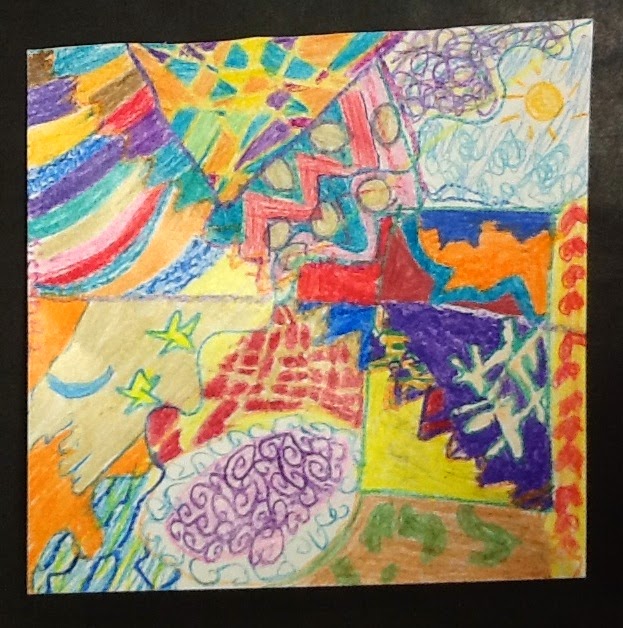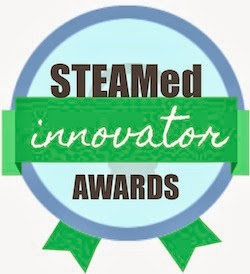Why teach art from a global perspective?
Engaging our students in this way facilitates their developing awareness of the world around them, in which they can play an active part. Their perceptions and understandings are framed first by their local experience, directly with their family, its history and traditions, and then with their local community. By unpacking art with a global context, we can broaden our students’ understanding of humanity. “Schools provide dialogical environments where students can discuss with adults the meaning of their experiences and begin to see their experiences in wider cultural contexts” (Duncum, 2001). Their inquiry into global issues and shared societal concerns provides a framework for learning about the world.
The Curriculum Goals
We can achieve this global framework by implementing curriculum with specific goals: first, interaction with others beyond the classroom, sharing ideas in a variety of formats; second, introduction to works of art of many origins and points of view; and finally, connection: a self-directed interest in the topic raised by the art, the process and the societal concern. As the "basis of learning is inquiry" (Lin, 2009, p. 201) we can help our students construct their learning through others via different forms and media. These interactions demonstrate how different people view important aspects of civilization, and document them through artifacts. Because culture is a "process" (Chung, 2009, p. 186) we need to conceive of our global interactions as part of that "mobile, constantly adapting, evolving, and seeking new outside influences and ideas" (p. 186) -way of creating our culture, be it in our art classrooms or out. Students are constructing their understanding of the world through their interactions. This dialogue, through which meaning is made, “is a collaborative process of negotiation in which participants interpret and construct the meanings of information in myriad ways” (Duncum, 2001) and is thus participatory in nature. As such, social communication is “not tied to a particular technology or platform, new media is embedded in a network of social interactions” (Delacruz, 2009, p. 15). Collaboration facilitates participatory culture in our art classrooms and elsewhere as a form of public engagement. An example of such an interaction would be the use of
Padlet, through which participants can post ideas, videos, links, questions and responses. This can effectively engage them in thinking through a variety of forms of expression, multilayered with media, exploring inter-disciplinarily through these ideas. This creates a hybridization of forms that evolve into something new, connected to critical issues and realities in a global context (Marshall, 2009).
Understanding Grows with Awareness
Specific works of art serve as springboards for exceptional discussions about globalization and its negative and/or positive effects. Ai Wei Wei’s
Coca-Cola Vase (2007) creates a perfect framework for evaluation of the impact of globalization. How has advertising affected our perspectives on which products to purchase? How does visual culture, as demonstrated via logos and motif, attribute to our collective associations with certain products over others? How is Ai Wei Wei addressing culture, art history and the value of works to society? El Anatsui’s work,
Earth’s Skin (2007) addressing the impact of colonialism, and globalization, how does it demonstrate power? These questions among others would provide the basis for a lesson on visual culture, material culture and advertising where students would evaluate the impact on their choices. Their work, in 2D or 3D, could juxtapose their needs and wants in the context of global influences through collage and mixed-media.
Do Ho Suh, through his work,
Seoul Home/LA Home/New York Home/Baltimore Home/Seattle Home (1999) explores the transient nature of society, and how he personally responds to his displacement. What is home? There is a population within our schools where a transient experience is the norm. How can we share that others face this experience as well, especially as we look at the global tradition of crossing borders? How do we establish our own space--what aspects of our experience would we replicate in a new one? This lesson would explore our own traditions, ways of making a personal space and call into question how we determine what our home is.
Self-Directed Connections
Self-directed inquiry establishes a personal perspective from which learning evolves. Our collective goal is the virtuous cycle of learning, where students construct their experience (Gude, 2004). They have to care about what they are doing. It goes without saying that as art educators we need to demonstrate care in regards to our students’ interests, fears, concerns, joys and successes, as it establishes a culture of caring of other peoples’ experience and situation (Noddings, 2005). We validate their effort, by allowing them to speak. This facilitates the evolution of their personal voice through their art which in turn, demonstrates the importance of discourse with a global mindset.
In the context of socially-relevant experiences, connecting the art classroom learning to environmental and ecological concerns provides students with the opportunity to do something for the collective good. By incorporating works by
Vik Muniz, for example, which use out-of-the-ordinary materials for the creation of appropriated images, as well as works by
Aurora Robson, which transform materials into ethereal sculptures, we can cause students to look at materials and waste in a whole new way. Their ability to thus transform materials, taking them out of the context of their original purpose, and delegating them to a new meaning, develops students’ ability to question, interpret and justify their work. It also moves them to discuss our impact on the globe through over-production, over-consummation and our throw-away mentality. It makes them look at their own localized actions, determining what their global impact could be if they took action.
Teaching art from a global perspective informs students of the variety of influences upon society. Their interactions help them develop an understanding that they are part of a greater, global community to which they can connect and contribute to culturally, visually and intellectually in socially-relevant ways.
References
Chung, S. K. (2009). Art education and cybermedia spectacles in the age of globalization. In E. M. Delacruz, A. Arnold, M. Parsons, and A. Kuo, (Eds.),
Globalization, art, and education (pp. 186-192). Reston, VA: National Art Education Association.
Delacruz, E. M. (2009). Art education in the age of new media: Toward global civil society.
Art Education, 62(5), 13-18.
Duncum, P. (2001). Theoretical foundations for an art education of global culture and principles for classroom practice.
International Journal of Education in the Arts, 2(3). (Online journal) http://www.ijea.org/ Retrieved June 10, 2014 from
http://www.ijea.org/v2n3/index.html.
Gude, O. (2004). Postmodern principles: In search of a 21st century art education.
Art Education, 51(1), 6-14.
Lin, C. (2009). Beyond visual literacy competencies: Teaching and learning art with technology in the global age. In E. M. Delacruz, A. Arnold, M. Parsons, and A. Kuo, (Eds.),
Globalization, art, and education (pp. 198-204). Reston, VA: National Art Education Association.
Marshall, J. (2009). Globalization and contemporary art. In E. M. Delacruz, A. Arnold, M. Parsons, and A. Kuo, (Eds.),
Globalization, art, and education (pp. 88-96). Reston, VA: National Art Education Association.
Noddings, N. (2005).
The Challenge to care in schools: An Alternative approach to education. Teachers College Press, New York, NY.






















